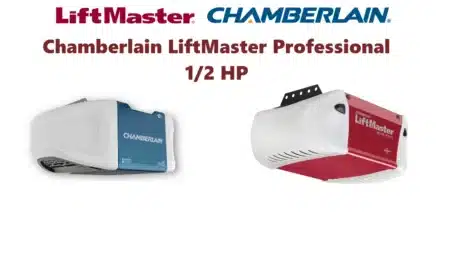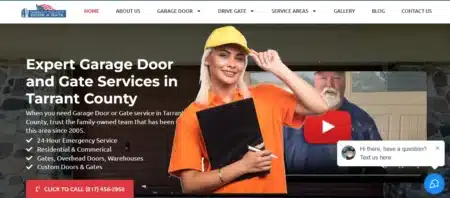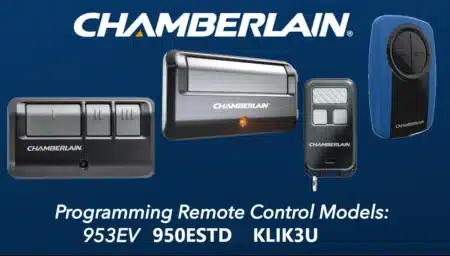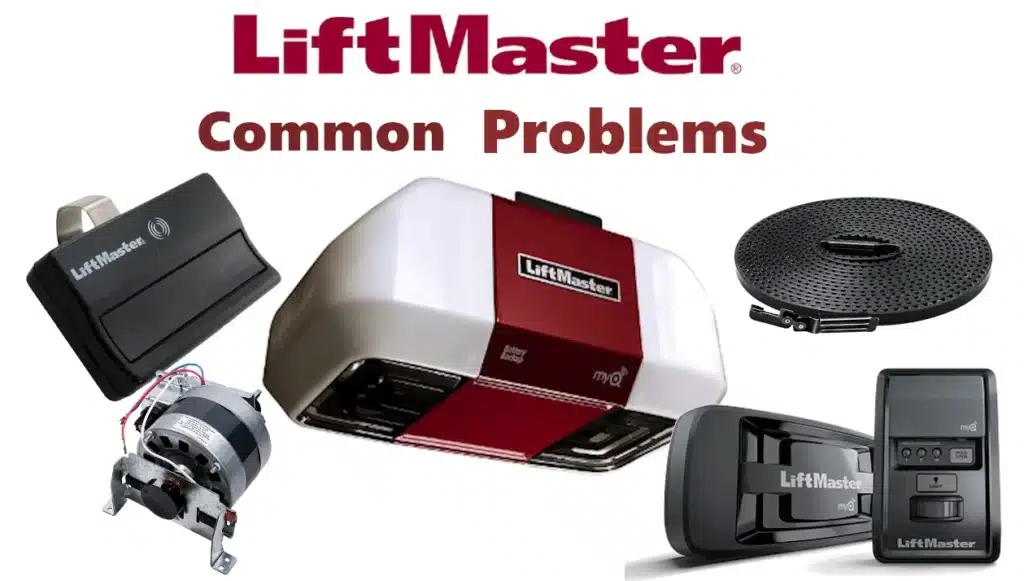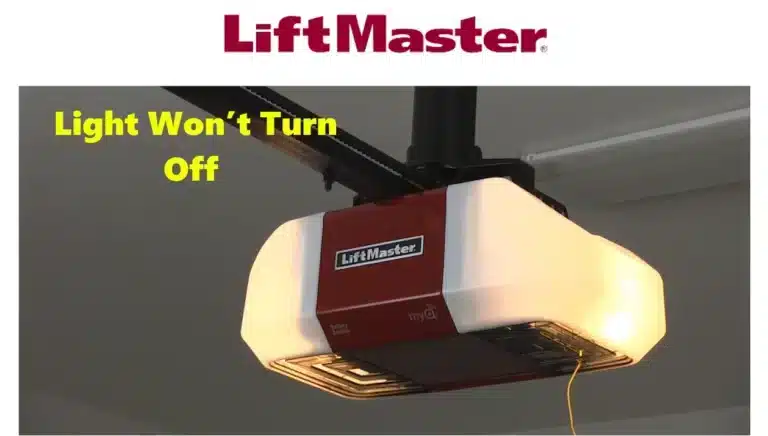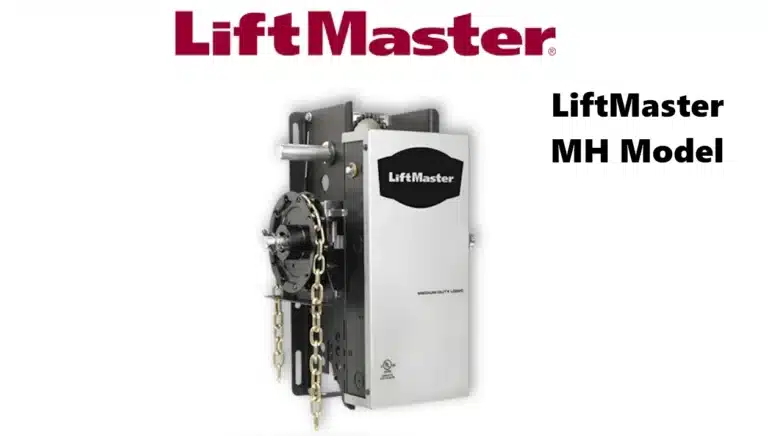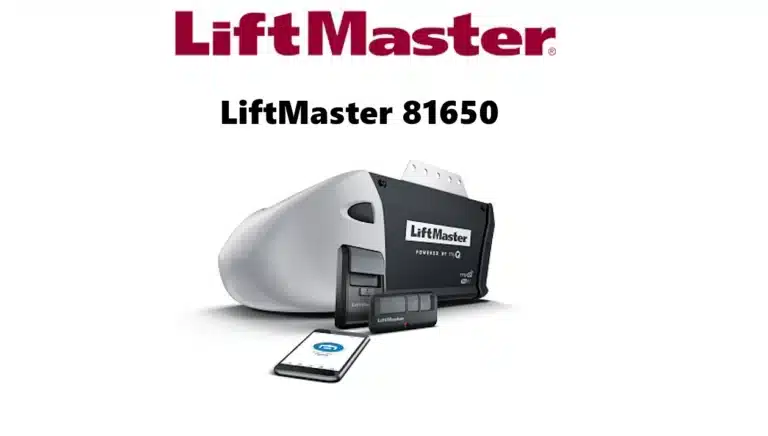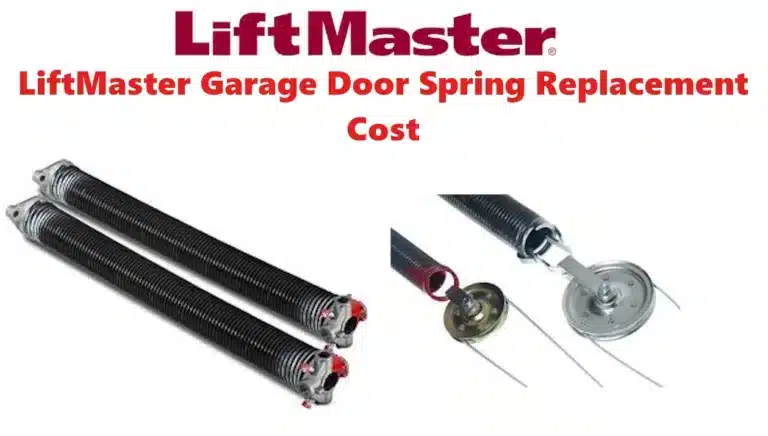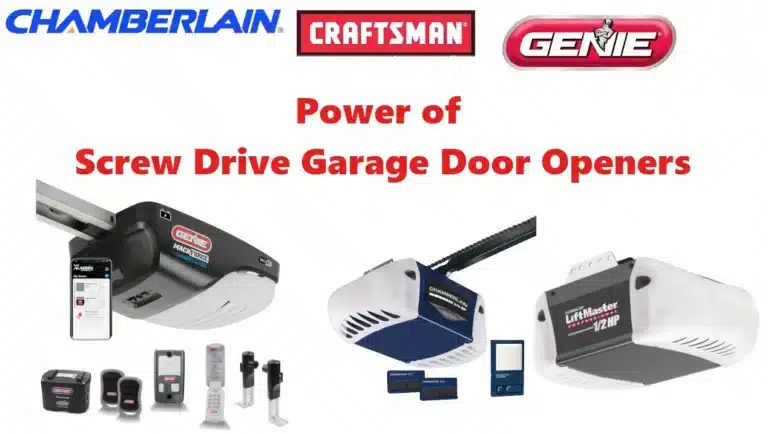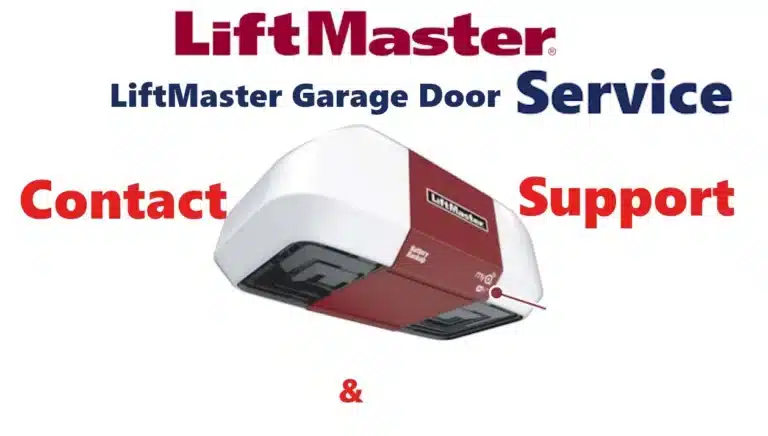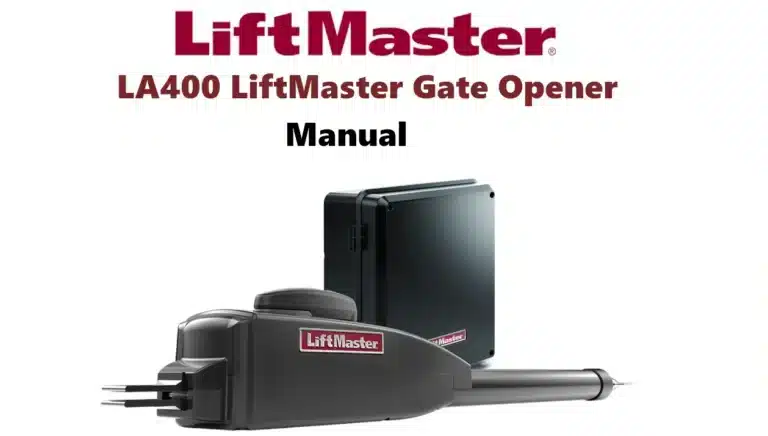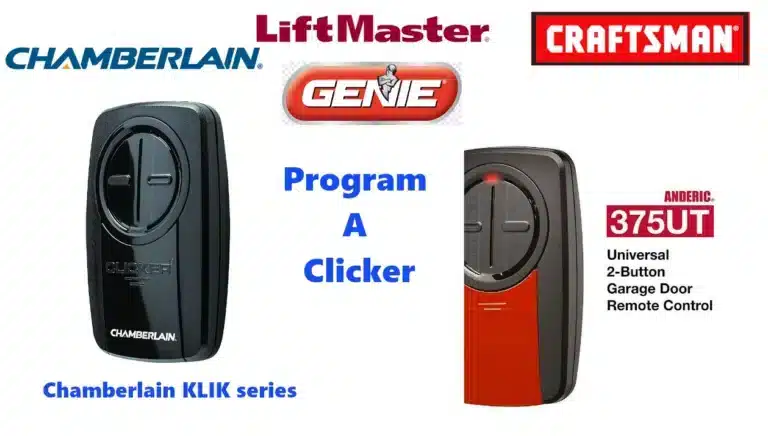LiftMaster is a leading brand of residential garage door openers, known for quiet, powerful performance and smart connectivity. LiftMaster openers (made by the Chamberlain Group) often feature built‑in Wi‑Fi and myQ smartphone control, letting you monitor and operate your garage door remotely. Many models include battery backup and extra-bright LED lighting for safety and convenience. In this guide we compare popular LiftMaster models, explain key features (horsepower, drive type, security), and cover pros/cons, buying options, installation, and troubleshooting tips.
LiftMaster Residential Garage Door Opener Comparison
The table below compares key LiftMaster residential garage models. It highlights drive type, horsepower, smart features, price range, and ideal use cases:
| Model | Drive Type | Motor | MyQ/Wi‑Fi | Battery Backup | Approx. Price (USD) | Ideal Use Case |
|---|---|---|---|---|---|---|
| 87504‑267 (Elite, Secure View™) | Belt (DC) | DC (no HP rating) | ✅ Yes | ✅ Yes | $600–$900 | Ultra-quiet with built-in camera and lighting. Perfect for attached garages or Amazon Key delivery. |
| 84501 (Premium) | Belt (DC) | DC (no HP) | ✅ Yes | ❌ No | $300–$400 | Quiet and smooth operation with LED lighting. Great for standard residential garages. |
| 8365W‑267 (Premium) | Chain (AC) | ½ HP AC | ✅ Yes | ❌ No | $250–$350 | Durable chain drive with extra remote and keypad. Ideal for heavier or insulated doors. |
| 8165W (Contractor) | Chain (AC) | ½ HP AC | ✅ Yes | ❌ No | $250–$300 | Heavy-duty for frequent use or very large doors. Reliable choice for value. |
| 98022 (Elite, Jackshaft) | Wall-Mounted | ¾ HP DC | ✅ Yes | ✅ Yes | $600–$800 | Side-mount opener that frees ceiling space. Perfect for high-lift or obstructed garages. |
Each model above includes LiftMaster’s myQ app control and rolling‑code security (Security+ 2.0). Many also work with Amazon Key for in‑garage delivery. (Prices vary by retailer; check LiftMaster, Home Depot, Lowe’s or Amazon for current offers.)
Key Features of LiftMaster Residential Garage Door Openers
LiftMaster Residential Garage MyQ Connectivity and Smart Access
Most LiftMaster Residential garage feature built‑in Wi‑Fi and myQ technology for remote access. Using the free myQ app, you can open/close the door, receive status alerts, and check activity on your smartphone. High‑end models even include smart cameras: for example, the 87504‑267 Elite opener has an integrated 1080p camera with two‑way audio, streaming video and alerts via myQ. myQ also syncs with smart home systems (Google, Alexa, Apple HomeKit, etc.) for voice control and automation.
LiftMaster Residential Garage Horsepower Ratings
LiftMaster residential openers come in ½ HP and ¾ HP versions. A ½-horsepower motor usually handles standard 7‑foot double‑car doors, while ¾‑HP units are recommended for heavier or taller doors. (Jackshaft models like the 98022 use DC motors without a traditional HP rating, offering fast speed and quiet running.) Higher‑HP openers lift large or insulated doors more easily and with less strain.
Belt Drive vs. Chain Drive: Which Is Better?
- Belt drive: Uses a reinforced belt (often nylon-wrapped) instead of a chain, so it runs ultra-quiet with minimal vibration. Belt drives (like models 87504‑267 and 84501) are ideal for attached garages or living spaces above/near the garage. They still deliver plenty of strength for typical doors, and the soft‑start/stop reduces wear.
- Chain drive: Uses a metal chain to move the trolley. Chain drives (like models 8365W and 8165W) are very powerful and durable, suitable for the heaviest doors and higher daily cycles. They are more affordable but are slightly noisier than belt drives. LiftMaster’s chain models often include Motor Vibration Isolation to reduce noise.
Many newer LiftMaster models come in a sleek, compact form (as shown) with integrated LEDs and myQ. Belt‑drive openers offer “virtually silent” performance, while chain drives prioritize raw lifting power.
LiftMaster Residential Garage Security Options
LiftMaster openers incorporate advanced security features. All use Security+ 2.0 rolling‑code technology, meaning a new secure code is sent with each remote click, making wireless hacking exceedingly difficult. Most models also include PosiLock®: an electromechanical deadbolt that automatically locks the door once closed, thwarting forced entry. Newer models may offer additional alerts: for example, LiftMaster’s Alert-2-Close system provides audible/visual warnings (beeps) before the door closes. Exterior keypads with PIN access are standard on many models for secure code entry.
Pros and Cons of Liftmaster Residential Garage
Pros: LiftMaster is praised for build quality, reliability and safety. Industry experts note that their openers use solid metal components and heavy-duty motors, with features like automatic reversal and motion‑detection lighting. The brand offers an unusually broad model range: belt, chain and even wall‑mount openers, with options like battery backup (for power outages) and Wi‑Fi smart control. Many users find LiftMaster products intuitive to install and use; for example, one reviewer said “instructions were simple enough… installation was fairly easy and straightforward”. Side‑mount models (e.g. 98022) are noted for saving ceiling space and operating extremely quietly. LiftMaster openers also tend to integrate seamlessly with smart home systems and have responsive customer support.
Cons: The main drawback is cost. LiftMaster units are often more expensive than basic garage door openers (other Chamberlain brands or competitors) of similar horsepower. Some users note minor downsides: lower‑end models may ship with only one remote, and the myQ app has received occasional feedback of being “a bit clunky” to link or navigate. Homelink compatibility in cars can sometimes require an extra wireless bridge. In summary, LiftMaster is not the cheapest option, but buyers trade cost for top performance and durability.
Where to Buy LiftMaster Residential Garage
LiftMaster residential openers are sold through multiple channels:
- LiftMaster Official Store: Visit the LiftMaster website to browse all residential models and find certified dealers.
- Home Depot: The Home Depot carries garage door openers (primarily Chamberlain-branded), and some LiftMaster models. See Home Depot Garage Door Openers. (Installation services are offered as an add-on.)
- Lowe’s: Lowe’s offers a range of LiftMaster/Craftsman openers. Check Lowe’s Garage Door Openers for models, pricing and availability.
- Amazon: Many LiftMaster openers and accessories (remotes, sensors, keypads) can be purchased on Amazon by searching for “LiftMaster garage door opener.”
Be sure to verify you’re buying genuine LiftMaster products (with factory warranty). Prices and bundle options (with rails, remotes, etc.) vary, so compare between retailers for the best deal.
LiftMaster Residential Garage Installation Overview
LiftMaster openers come with detailed installation manuals. Basic steps include: mount the motor head (ceiling or wall), install the rail and trolley (if applicable), attach the door arm, connect sensors, and program remotes/keypads. Models with battery backup or wireless features may have additional steps.
Many homeowners DIY these installations. In fact, customer feedback notes that instructions are generally clear and the process is “easy and straightforward” with some basic tools. However, because of the weight and spring tension of garage doors, professional installation is often recommended for safety. A certified installer will ensure correct spring balance, wire up sensors, and properly set travel limits and force adjustments. New LiftMaster belt drive units use one‑piece solid rails (unlike some box‑store brands), which avoids joint friction issues. If you choose DIY, follow the manual closely (don’t overtighten limits or force), and consider having an assistant help with lifting and alignment.
When installing a smart opener, also plan for connectivity: you’ll need a 2.4GHz Wi‑Fi network and possibly to reset your home router’s settings during setup. LiftMaster’s myQ app will walk you through linking the opener to your network.
Bottom line: Pros often install LiftMaster openers themselves, but if you’re uncertain about garage door mechanics, electrical work or you prefer peace of mind, professional installation is a worthwhile investment.
LiftMaster Residential Garage Troubleshooting Tips
Here are common LiftMaster garage door issues and quick fixes:
- Opener won’t move or lights flash: First, check the wall console’s lock switch (if present). If the lock button is enabled, it disables remote/keypad operation. Make sure it’s off. Next, inspect the safety sensors (“photo eyes”) at the bottom of the door. Dirt, spiderwebs or misalignment between them will stop the door from closing. Clean the lenses and realign the two sensors so their LEDs glow steady (not blinking).
- Door reverses upon closing: This usually indicates sensor issues as well. Ensure nothing blocks the beam and that the lenses face each other. Also verify the door tracks are clear.
- Opener beeps or chirps: LiftMaster units with battery backup or Wi-Fi may use beeps as alerts. For example, constant 2-second beeps (steady orange light) mean the opener is running on battery power, so check if household power is off. Beeps every 30 seconds with flashing orange/red indicate a low or dead battery that needs replacement. Rapid beeps may signal Wi-Fi connection attempts (3 slow beeps when linking to Wi-Fi) or failures (6 fast beeps if it can’t reach the MyQ server). Refer to your model’s manual for specific beep codes.
- Remote or keypad won’t work: Try replacing the remote’s battery and reprogramming it to the opener. Ensure the opener’s “learn” button was pressed within 30 seconds after activating the remote. For keypads, make sure the PIN entry is correct and that the keypad is paired following instructions. If Homelink in a car isn’t working, use LiftMaster’s Homelink compatibility guide – sometimes an additional wireless repeater bridge is needed.
- No lights or weak motor: Check power – ensure the opener is plugged in and the circuit breaker isn’t tripped. On models with battery backup, a drained battery might reduce power. Also inspect the door springs: if springs are worn or broken, the opener may struggle to lift the door. Lubricate rollers, hinges and springs annually with garage door lubricant to reduce friction.
- LED lights stay on continuously: Many LiftMaster openers have motion-activated lights. If lights never turn off, check if the wall control’s light button is stuck on. Walking in front of motion sensors or blocked photo eyes can keep lights on. The owner’s manual shows how to adjust the light timer (minimum 1.5 minutes).
When in doubt, consult LiftMaster’s support site or a professional. If issues persist, professional repair ensures safety sensors and force settings are correctly adjusted.
Sources: Product details and specs from LiftMaster (via LiftMaster.com and authorized dealers). Feature descriptions and troubleshooting are based on LiftMaster documentation and expert garage door guides. Purchasing links as noted from LiftMaster, Home Depot, Lowe’s, and Amazon.

